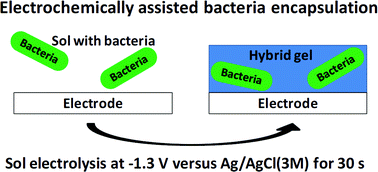This month sees the following Journal of Materials Chemistry C articles that are in the top ten most accessed from April – June:
Two-dimensional semiconductors: recent progress and future perspectives
Xiufeng Song, Jinlian Hu and Haibo Zeng
J. Mater. Chem. C, 2013,1, 2952-2969
DOI: 10.1039/C3TC00710C
Crystallization, phase evolution and ferroelectric properties of sol–gel-synthesized Ba(Ti0.8Zr0.2)O3–x(Ba0.7Ca0.3)TiO3 thin films
Zeng-mei Wang, Kuan Zhao, Xin-li Guo, Wei Sun, Hua-long Jiang, Xue-qin Han, Xu-tang Tao, Zhen-xiang Cheng, Hong-yang Zhao, Hideo Kimura, Guo-liang Yuan, Jiang Yin and Zhi-guo Liu
J. Mater. Chem. C, 2013,1, 522-530
DOI: 10.1039/C2TC00020B
Transparent, flexible conducting graphene hybrid films with a subpercolating network of silver nanowires
Yang Liu, Quanhong Chang and Lei Huang
J. Mater. Chem. C, 2013,1, 2970-2974
DOI: 10.1039/C3TC30178H
Development of high performance OLEDs for general lighting
Hisahiro Sasabe and Junji Kido
J. Mater. Chem. C, 2013,1, 1699-1707
DOI: 10.1039/C2TC00584K
On the origin of the shift in color in white organic light-emitting diodes
Shufen Chen, Qiang Wu, Min Kong, Xiaofei Zhao, Zhen Yu, Pengpeng Jia and Wei Huang
J. Mater. Chem. C, 2013,1, 3508-3524
DOI: 10.1039/C3TC00766A
Ferroelectric nanoparticles, wires and tubes: synthesis, characterisation and applications
Justin Varghese, Roger W. Whatmore and Justin D. Holmes
J. Mater. Chem. C, 2013,1, 2618-2638
DOI: 10.1039/C3TC00597F
Recent advances in mechanochromic luminescent metal complexes
Xiqi Zhang, Zhenguo Chi, Yi Zhang, Siwei Liu and Jiarui Xu
J. Mater. Chem. C, 2013,1, 3376-3390
DOI: 10.1039/C3TC30316K
High-performance pure blue phosphorescent OLED using a novel bis-heteroleptic iridium(iii) complex with fluorinated bipyridyl ligands
Florian Kessler, Yuichiro Watanabe, Hisahiro Sasabe, Hiroshi Katagiri, Md. K. Nazeeruddin, Michael Grätzel and Junji Kido
J. Mater. Chem. C, 2013,1, 1070-1075
DOI: 10.1039/C2TC00836J
Seeded growth route to noble metal nanostructures
Chuanbo Gao, James Goebl and Yadong Yin
J. Mater. Chem. C, 2013,1, 3898-3909
DOI: 10.1039/C3TC30365A
Ternary and quaternary metal chalcogenide nanocrystals: synthesis, properties and applications
Dmitry Aldakov, Aurélie Lefrançois and Peter Reiss
J. Mater. Chem. C, 2013,1, 3756-3776
DOI: 10.1039/C3TC30273C
Why not take a look at the articles today and blog your thoughts and comments below.
Fancy submitting an article to Journal of Materials Chemistry C? Then why not submit to us today!















